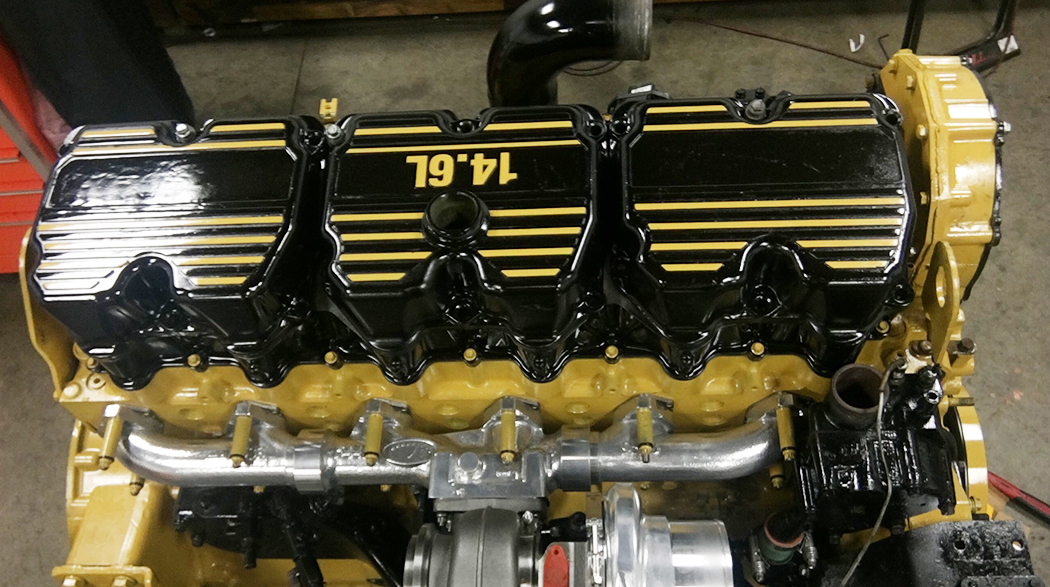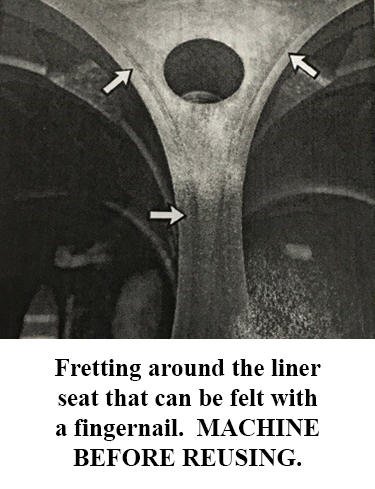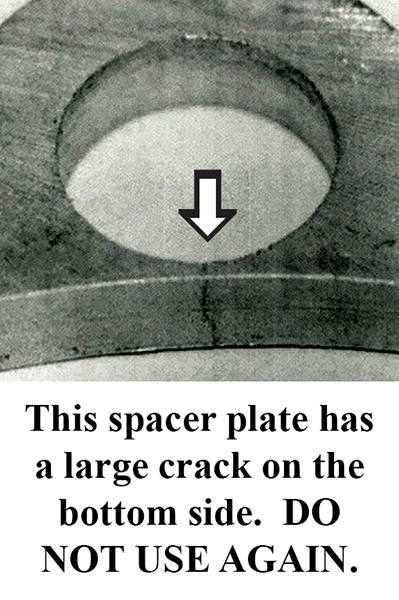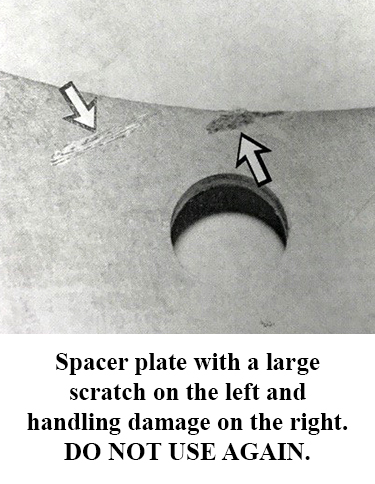This month, I want to share some repair instructions about head gasket failures that come directly from Caterpillar. These observations will pertain to the Caterpillar 3406-B, C, E, C-15, C-16 and C-18 series engines, but the same principles pertain to all diesel engines. We have been writing about some of these very subjects for the past 28 years. The information I’m about to give you was taken from a Caterpillar Special Instruction. It’s about the condition of the top of the engine block, the spacer plate, and liner protrusion. When you have a shop replace your head gasket or rebuild your engine, it’s imperative that the liner protrusion be checked the proper way. Your mechanic should know how to do this. You can find this information in many of my previous articles online.
Caterpillar has found that many head gasket failures are due to improper inspection/repair of the liner seats. The liner seats in the cylinder block must be inspected after a head gasket failure or during an engine overhaul. The liner seat is important in controlling liner projection, as well as the location of the liner. Failure to inspect and repair the liner seat will result in premature head gasket failure. Premature head gasket failure, due to the need for liner seat repairs, will not be covered under Caterpillar parts warranty. NOTE: Do not use a rotary wire wheel to clean the spacer plate. Excessive cleaning to the plate will cause deformation.
TOP DECK SURFACE INSPECTION. Inspection of the cylinder block top deck, especially in the liner seat area, is critical to head gasket life. A visual inspection of the liner seat area will determine if the block is reusable. Head gasket failure and/or liner flange cracks can result from an irregular surface on the liner seat area regardless of the liner projection results. If the block needs to have the liner seats counter bored, contact your local Cat dealer. They will have the latest documentation and the capability to machine the cylinder block and install liner seat inserts.
NOTE: The liner seat of the cylinder block must be inspected to ensure that it is usable as-is or if liner seat inserts must be installed prior to the installation of the liner. Anytime the cylinder head is removed, liner projection should be measured. Refer to “Testing and Adjusting Cylinder Liner Projection” for more information on how to measure liner projection. Also, special consideration should be given to other areas, such as the spacer plate joint, to ensure proper sealing and long-term reliability.
If any of the following are true, block machining and installation of liner seat inserts is necessary: lack of original machining marks in the liner seat area; fretting, erosion, pitting, or corrosion in the liner seat area; liner projection is not within specs; engine block life is greater than 750,000 miles or 15,000 hours; the head is being removed because of a liner flange failure or a cylinder head gasket failure following an overhaul or previous head gasket repair; the engine is being overhauled for a second time and liner seat inserts were not installed during the first overhaul.
TOP DECK VISUAL INSPECTION. The following visual inspection process should be followed carefully. Any evidence of top deck wear, fretting, corrosion, pitting or erosion should be addressed during the repair. If machining marks are present across the entire deck, including the liner seat areas, use as-is. No machine work is required. If the block shows witness marks 360 degrees around the liner bore seat, but no wear can be felt with a fingernail, use as-is. No machine work is required. If liner seats are showing corrosion or pitting around the liner seat, machine the block before reusing. If there is fretting around the liner seat and this fretting can be felt with a fingernail, machine the block before reusing. If there is polishing at the top of the liner seat and fretting at the bottom, machine the block before reusing.
SPACER PLATE INSPECTION. Inspection of the spacer plate is also critical. Never reuse a spacer plate gasket. Do not grind the plate to clean the spacer plate. Do not reuse spacer plates with cracks, handling damage, cleaning damage or large amounts of corrosion/erosion. If the spacer plate only shows imprints from the gasket, it can be used again.
OTHER CONSIDERATIONS. If there’s been a head gasket failure, the use of new cylinder head bolts is recommended. It is impossible to know how many times a bolt has been used. All bolts yield when they are torqued. Repeated torqueing of a bolt will eventually fatigue the bolt and failure of the joint will occur. Before installation, apply Loctite 5923 to both sides of the spacer plate gasket. If one cylinder requires liner seat inserts, it is recommended that the other five are also machined. This will ensure the best possible result and long-term reliability of the joint.
There it is – right from Caterpillar – they call it liner projection, but we have been calling it liner protrusion for the past 40 years. Projection or protrusion, it is the same, and it’s critical that these measurements be made and adjusted when rebuilding or when a new head gasket is being installed. We at Pittsburgh Power have the equipment to cut your block for the Caterpillar stainless steel liner shim, and also to install new liner seats, if necessary. If you have questions or need more details, visit us at www.pittsburghpower.com or call (724) 360-4080.






